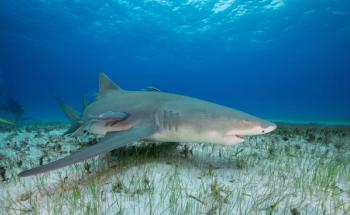
Research Update: Using thermography to evaluate limbs in dogs
In this prospective study from a referral practice, the limbs of 10 healthy dogs were evaluated by using a thermographic imaging protocol to determine normal cutaneous thermographic patterns (a color map that indicates the skin temperature distribution) and evaluate the effect of hair clipping.
In this prospective study from a referral practice, the limbs of 10 healthy dogs were evaluated by using a thermographic imaging protocol to determine normal cutaneous thermographic patterns (a color map that indicates the skin temperature distribution) and evaluate the effect of hair clipping. Ten intact female Labrador retrievers (median age = 13 months) from a service organization were evaluated in a temperature-controlled (69.8 F [21 C]) room. An infrared camera connected to a laptop computer was used. After images were obtained of dogs with intact coats, the hair was clipped on the forelimbs and hindlimbs in a surgical preparation pattern with a No. 40 clipper blade. Additional images were obtained 15 minutes, 60 minutes, and 24 hours later.
The results revealed that for each region of interest mean skin temperatures were similar among all 10 dogs before and after clipping. The values obtained for the intact coat were significantly less by several degrees than were the temperatures of clipped regions. No differences were detected between 15- and 60-minute values or most 60-minute and 24-hour readings. The temperatures did not differ significantly between right and left limbs. Mean image pattern analysis success rates of 90% for the hindlimbs and 60% for the forelimbs were obtained for recognition of thermographic patterns. The authors suggest that thermography could be a useful, noninvasive tool in assessing limb disorders and conclude that consistent thermal imaging patterns are obtained 15 minutes after clipping.
COMMENTARY
Thermography is a noninvasive diagnostic imaging technique used to evaluate cutaneous thermal patterns in human medicine as well as for polygraph testing and equine lameness evaluations. Surface heat measurements are directly related to dermal circulation controlled by the autonomic nervous system and co-related disease conditions, such as breast cancer, burns, and nerve, disk, and joint diseases in people. In horses, thermography has been used to evaluate muscle, tendon, bone, and joint injuries.
The results of this study, which used a limited number of normal dogs, may serve as a basis for determining the viability of this technique as a diagnostic and therapeutic imaging evaluation tool of limb abnormalities (bone, muscle, tendon, joint pathologies) in small animals. Thermography seems to confirm an oft-repeated comment by clients that the shaved operative site feels hotter than normal. It would be interesting to note if thermography could discern diseases in patients with an intact coat on presentation or if readings require coat clipping and a 15-minute waiting period. The difference in image pattern analysis success rates between hindlimb and forelimb evaluations may also need to be clarified in future studies.
Loughin CA, Marino DJ. Evaluation of thermographic imaging of the limbs of healthy dogs. Am J Vet Res 2007;68:(10)1064-1069.
The information in "Research Updates" was provided by Veterinary Medicine Editorial Advisory Board member Joseph Harari, MS, DVM, DACVS, Veterinary Surgical Specialists, 21 E. Mission Ave., Spokane, WA 99202.
Joseph Harari
Newsletter
From exam room tips to practice management insights, get trusted veterinary news delivered straight to your inbox—subscribe to dvm360.




